103 CD / Francaix: String Trios
The Gaede Trio Series Vol. VI
String Trios
Ludwig van Beethoven
Ernst Krenek
W. A. Mozart / J. S. Bach
Jean Françaix
Gaede Trio
EAN/barcode: 4009850010302


Description
"Daniel Gaede, Thomas Selditz and Andreas Greger know how to grip the listener not only with new discoveries but also with well-known pieces. If you think you know the string trio op. 9/2 very well, you will be surprised about this recording. The Geade Trio, also jokingly called ""chameleon trio"", fascinates by experimenting as much as possible: There is nothing the three musicians won't try. It's unbelieveable how many different ""sordinos"" they have in their equipment to play the con-sordino-beginning of the Francaix Trio. The result is correspondingly - surprising..."
8 reviews for 103 CD / Francaix: String Trios
You must be logged in to post a review.

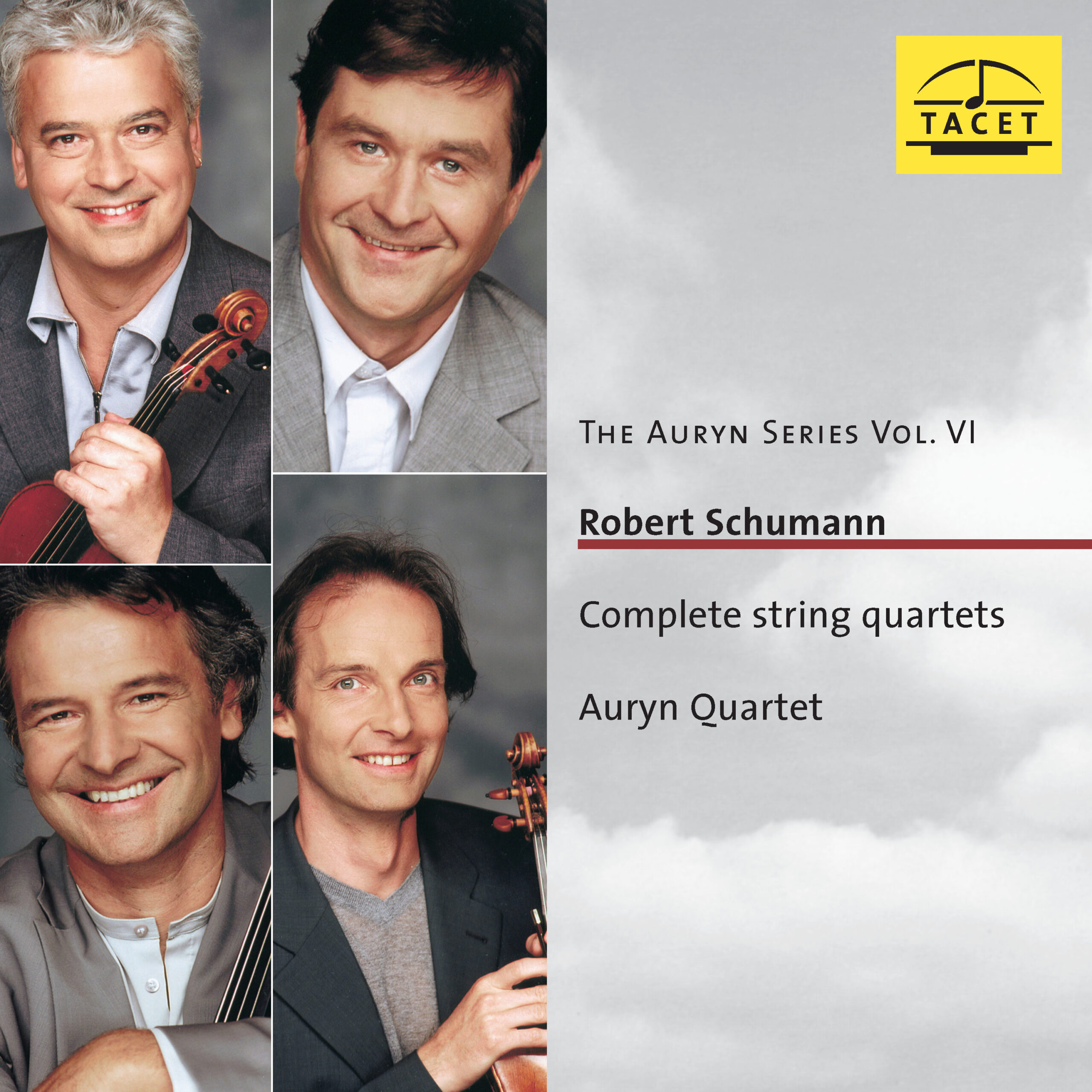
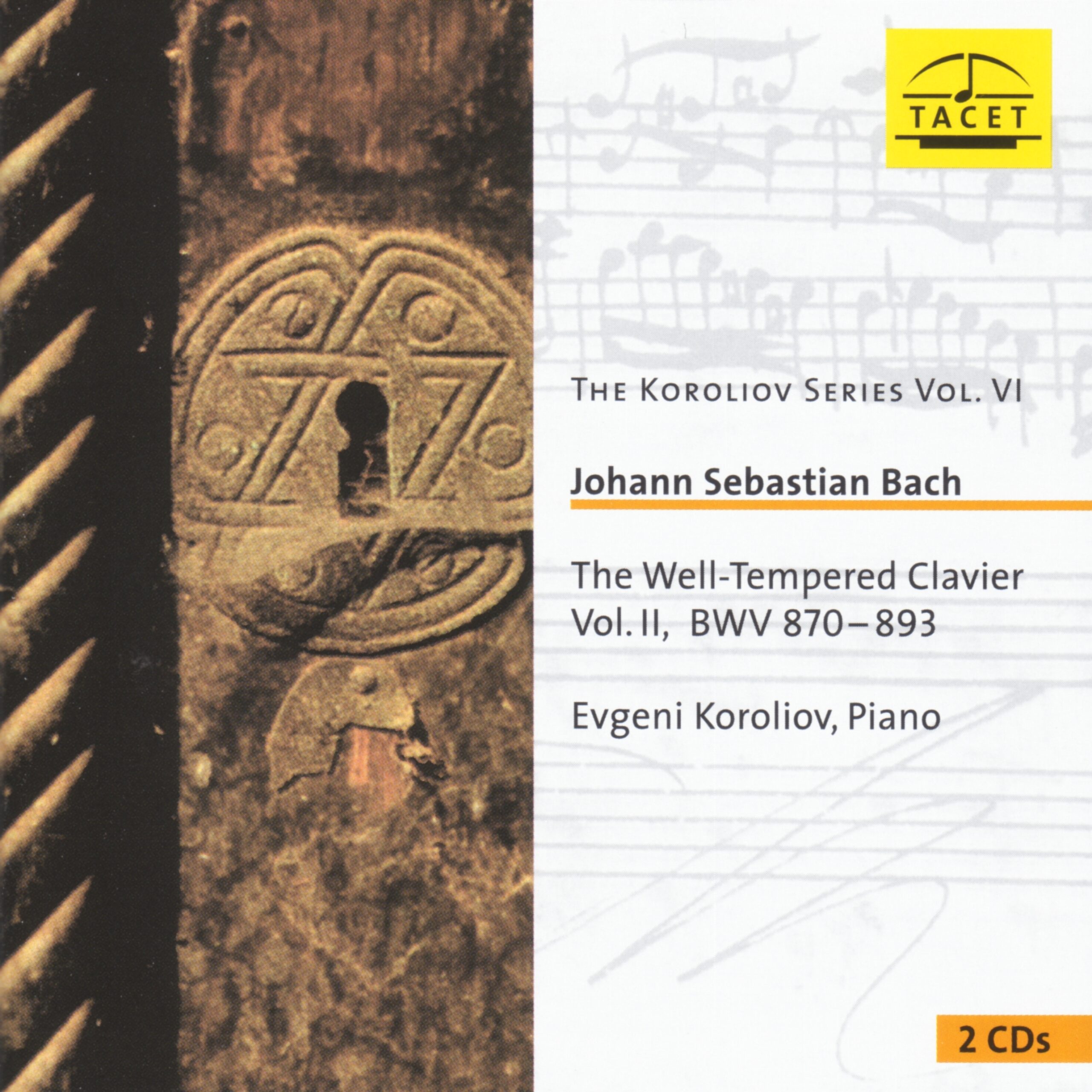
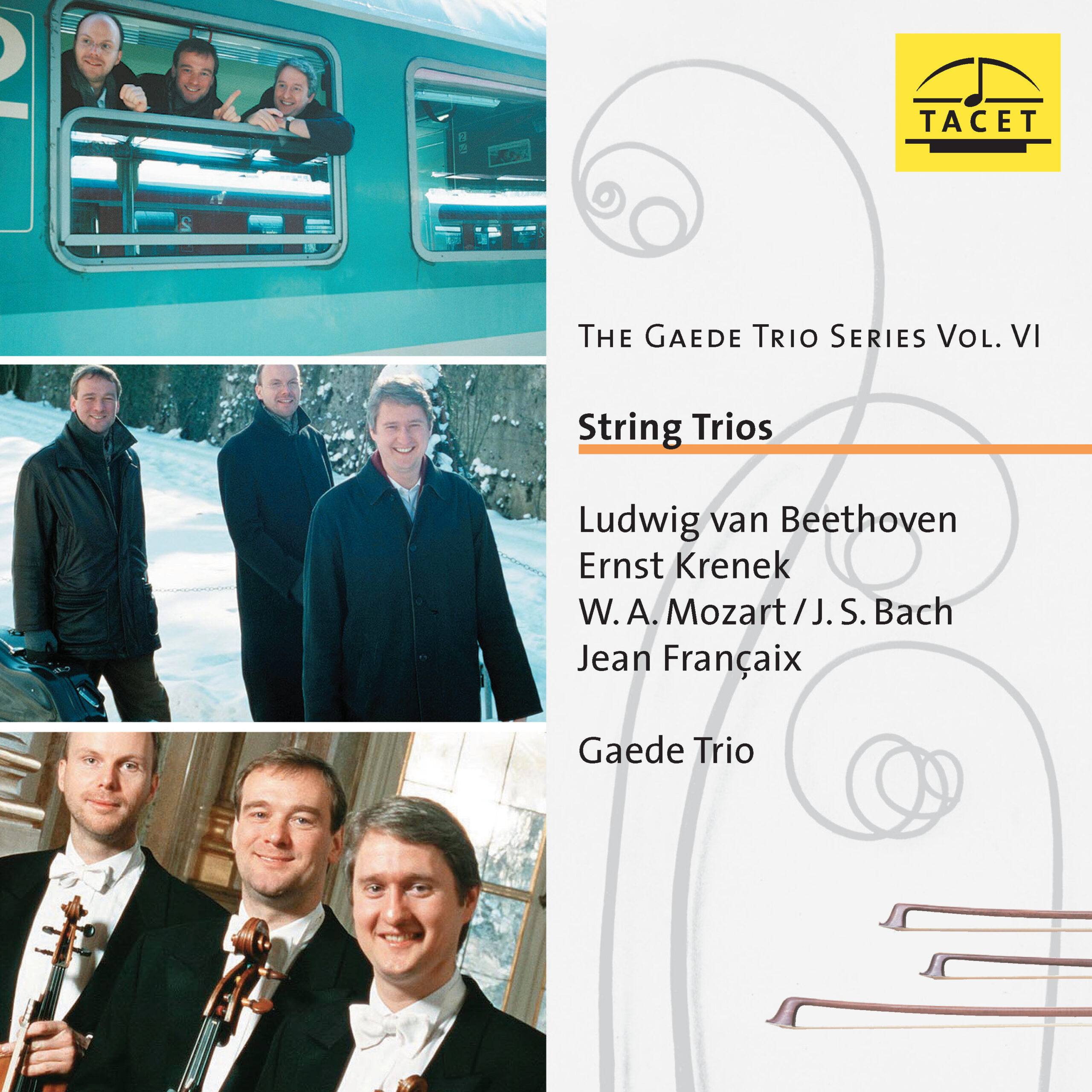
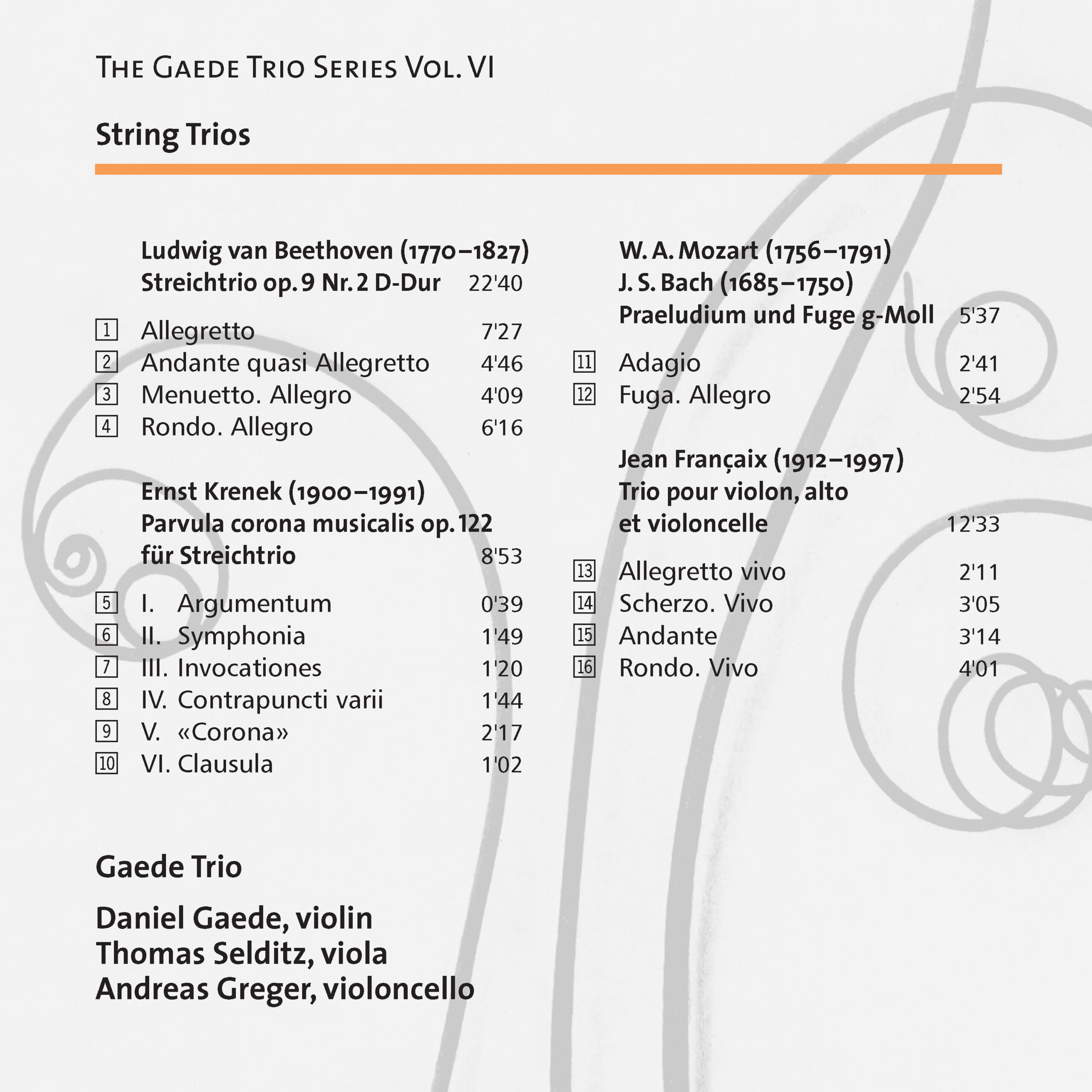
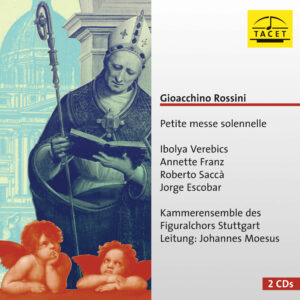
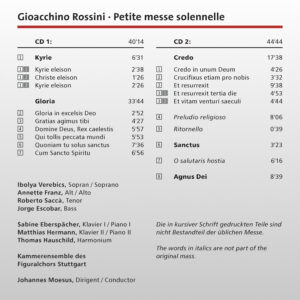

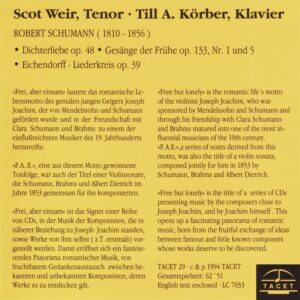
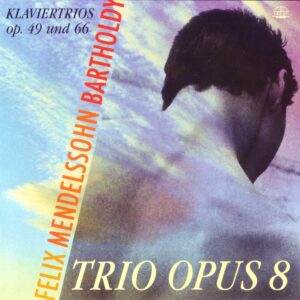
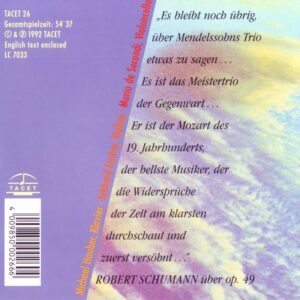
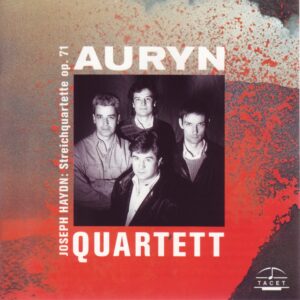


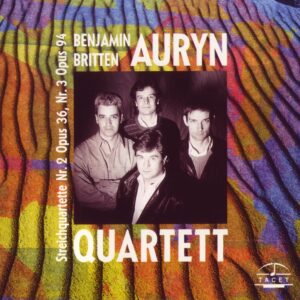
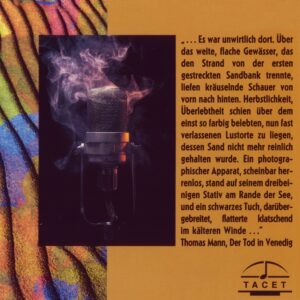
Fanfare-Magazin –
Listed on the cover of this release is "The Gaede Trio Series Volume 6," though I’ve never heard the ensemble, before. More’s the pity, because they reveal a sense of authority and technical expertise that makes their playing a joy to hear. This is excellent music-making on all levels: technically, interpretatively, communally.
Though part of a series, this album could be a test case for the Trio’s ability to handle stylistic divergence. The Gaedes manage things well, giving each work its due, and tempering their innate facility and warmth of line with a sympathetic understanding for each composition. The Bach/Mozart is suitably spare and transparent in texture, the Françaix agile and poised. Despite its dodecaphonic nature, the Krenek is actually a lyrical, almost Romantic work at times, and that quality the Gaede Trio brings out in spades. The Beethoven hints at what is stylistically to come, but keeps its classical sang-froid: unsentimental but also unrushed, beautifully songful in the second movement, with great attention to detail and variety of texture and mood in the outer ones. This is playing that clearly has benefited from analysis, long experience, and teamwork, for which there are no shortcuts.
Above all, it’s rare to find a group that possesses both this unanimity of approach and a constant musical discourse in which all parties are clearly equal. They are capable of razor sharp unison attacks and hairpin dynamic effects, but have no problems in trading off center stage with the quicksilver rapidity demanded by Beethoven in his wittiest first-period manner.
For the record, the three members of the Trio are violinist Daniel Gaede, leader of the Vienna Philharmonic, violist Thomas Selditz, professor at the Hochschule für Musik und Theater, Hanover, and cellist Andreas Greger, principal of the Staatskapelle, Berlin. In 1991, all three were part of individual string trios that disbanded simultaneously. These musicians then decided to form a new string trio. With good liner notes and excellent sound, this release of theirs comes up a winner.
Barry Brenesal
Klassik heute –
The Gaede Trio, founded twelve years ago, is undoubtedly one of the most ambitious of its rather rare kind. All the more gratifying, then, that the Tacet label honors the ensemble—led by its namesake and first violinist, Daniel Gaede—with its own series, one that sets a standard in programming. On this CD, too, the three musicians juxtapose familiar works with exotic repertoire pieces. Krenek’s twelve-tone Bach homage receives a performance that focuses the strict construction system with dry accents and sharp intensifications, distilling it to its essence…
Norbert Rüdell
Ensemble –
This is the sixth recording by what is undoubtedly one of the world’s finest string trios, the Gaede Trio. And the enthusiasm endures. (…) A fascinating CD in every respect.
The Strad –
This disc, the sixth in a valuable trio series from TACET, features stylish, stimulating playing from an emerging world-class ensemble, the Gaede Trio. It is boldly programmed, juxtaposing Beethoven′s truly glorious D major Trio - which dates from 1797/98, the time of the early quartets and not long before his ballet, The Creatures of Prometheus, made him a talking point of Vienna - and Mozart′s deft treatment, at much the same age, of a Bach Prelude and Fugue. These are side by side with two works by well-contrasted 20th-century figures, the French chamber music composer Jean Francaix (1912-97) and the Viennese avant-gardist Ernst Krenek, who in his day (1900-91) made as much of a splash as Beethoven in his.
The subtle contrasts in this richly rewarding Beethoven trio must be attributed to the masterly composer himself, but the Gaede Trio′s loyalty to Beethoven′s design and attention to every detail and nuance (just hear the opening of the Andante and the same movement′s almost whispered later evolution) make the reading, peppered with exquisite ensemble playing, highly memorable. I find the group′s flair matches Mozart′s arrangement of the Bach Fugue a lot better than the preceding Prelude, whose treatment feels nervily over-pointed.
No such problem in the Francaix, a superb, spirited 1930s work with no less than three vivaces embracing an exquisite, shy Andante. Well worth dispicsing. The Krenek - a tribute to Bach′s bicentenary - is more polytonally pointilliste and fares better the more urgent, vital sections than in the slightly elusive, questing passages. The recorded sound is agreeably lucid.
Der Klang der Aufnahme ist angenehm klar.
Roderic Dunnett
klassik.com –
(…) In the final, ironic Rondo, the Gaede Trio once again showcases its defining qualities—perfection, versatility, and refinement.
--> original review
Pizzicato –
A splendid program crafted by the Gaede Trio for their 6th volume on Tacet: it skillfully bridges 18th- and 20th-century music, proving these three musicians have no intention of confining themselves to a single niche.
Beethoven’s Trio Op. 9 No. 2, its textures rendered wonderfully light by the Gaede Trio, is juxtaposed with Ernst Krenek’s Parvula corona musicalis—a work commissioned by RAI for the 200th anniversary of Bach’s death. The cyclical canon Krenek devised, translated into a modern idiom, is masterfully articulated by the trio. Next comes a Bach Prelude and Fugue in E-flat minor, reworked by Mozart for string trio. The program closes with Jean Françaix’s Trio, composed in 1933, which, under the Gaede Trio’s hands, transforms into a true gem. And if only for their deeply interiorized rendering of the Andante in this beautiful work—this disc is worth listening to. After all, beauty is priceless.
ma
_____________________________________
Original Review in French language:
Beau programme celui concocté par le Gaede Trio pour son 6e volume chez Tacet: il combine habilement la musique du 18e à celle du 20e siècle. Les trois musiciens veulent ainsi montrer qu′ils ne sont pas prêts à se spécialiser.
Le Trio op.9 no 2 de Beethoven avec ses textures rendues merveilleusement légères par les Gaede, est opposé à ′Parvula corona musicalis′ de Ernst Krenek, une oeuvre commandée par la RAI pour le 200e anniversaire de la mort de Bach. Le canon cyclique que Krenek a conçu est traduit dans un langage moderne que nos trois musiciens parlent avec bonheur. Vient ensuite un Prélude et fugue de Bach, celui enré mineur, que Mozart a retravaillé pour trio à cordes. Le programme se termine par le trio de Jean Françaix, une composition qui a vu le jour en 1933 et qui, sous les mains du Gaede Trio, se transforme en un vrai joyau. Et si ce n′etait que pour la lecture totalement intériorisée de l′Andante de cette belle oeuvre: ce disque vaut la peine d′être écouté. La beauté n′a pas de prix.“
ma
Classics Today –
The Gaede Trio plays this diverse program extremely well. In Beethoven′s D major trio the ensemble′s rich tone and lively approach to rhythm give the opening Allegretto a strong sense of forward movement, and the energy never flags. The same comments apply to Francaix′s delicious little work, probably the highlight of the disc and a piece that deserves to be much better known: It′s a jewel of French neo-classicism.
Mozart′s transcription of Bach′s Prelude and Fugue in G minor is often performed, and the Gaede Trio plays it as well as it can be -- but Krenek′s Parvula corona musicalis is one of the knotty atonal contraptions that give serial music a bad name. Fortunately, it′s just eight minutes long, and when played with this level of technical accomplishment it′s almost enjoyable.
In any case, coming between the Beethoven and the Mozart, with the Francaix as a finale, it makes the point of demonstrating the expressive and stylistic range of this neglected chamber music medium, and really that′s how this gorgeously recorded program should be heard -- in its entirety at one sitting.
David Hurwitz
Deutschlandradio Kultur –
The Gaede Trio has released another CD on Tacet that one might immediately consider highly award-worthy. The programming alone reveals a keen spirit. It opens with Beethoven’s extraordinarily refined String Trio Op. 9 No. 2. The conclusion is Jean Françaix’s highly playful String Trio, where moments of light, almost Viennese passages are suddenly interrupted by deliciously rough sul ponticello strokes and robust pizzicati, as if out of nowhere. At the heart of the program, however, are two works representing learned counterpoint. First, Mozart’s G minor arrangement of a fugue from Bach’s Well-Tempered Clavier, preceded by an imitative Adagio, played with such dancelike elegance that pianists could learn a thing or two. Not for a second does one suspect how tricky this arrangement is for strings. Second, the Gaede Trio has now recorded a work it performed in numerous concerts during the 2000 season: Ernst Krenek’s Parvula corona musicalis, Op. 122. This nine-minute string trio, written ad honorem Johannis Sebastiani Bach, is strictly composed in twelve-tone technique and not only includes Bach’s B-A-C-H anagram but also quotes from The Art of Fugue. The way the Gaede Trio infuses this music with emotion and depth, the way it explores the full range of articulative possibilities in such a compact space, represents nothing short of a summit of string artistry.